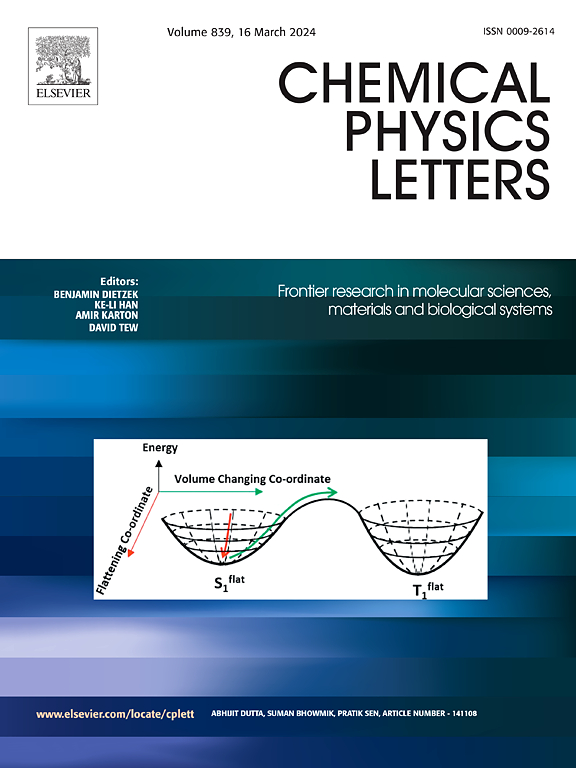Study on the degradation performance of tetracycline in water by chitin-based biochar-Bi2O3
IF 2.8
3区 化学
Q3 CHEMISTRY, PHYSICAL
引用次数: 0
Abstract
To enhance the photocatalytic degradation performance of Bi2O3 against tetracycline (TC) pollutants, a Biochar/Bi2O3 (BC/Bi2O3) composite photocatalyst was synthesized using chitin as a carbon source through a one-step calcination method. The tetracycline degradation efficiency of the photocatalytic material (mBC: Bi2O3 = 2:1) synthesized at 500 °C for 4 h was reached 83.43 %, as well as 5.5 and 1.5 times higher than that of the BC and Bi2O3 monomers, respectively, while the degradation rate constant of BC/Bi2O3 (2:1) was 0.0052 min−1, which was 13 and 1.7 times higher than that of BC (0.0004 min−1) and Bi2O3 (0.0030 min−1). Extensive property analysis shows that BC and Bi2O3 interact through Bi-O-C bonds after synthesize, which improves the electron transport efficiency and provides more active sites for the composite. The interaction between these two materials allows the composite to provide more active sites while improving the electron transfer efficiency. UV–vis spectroscopy and free radical quenching experiments further corroborated the direct degradation ability of the BC/Bi2O3 composite photocatalyst towards TC. As the reaction progressed, TC undergoes degradation mineralization via two distinct pathways, faciliatetd by the action of h+ and •O2− radicals. Overall, the functional BC/Bi2O3 with high photocatalytic activity provides worthwhile insights of photocatalytic materials application in the wasterwater treatment field.

求助全文
约1分钟内获得全文
求助全文
来源期刊

Chemical Physics Letters
化学-物理:原子、分子和化学物理
CiteScore
5.70
自引率
3.60%
发文量
798
审稿时长
33 days
期刊介绍:
Chemical Physics Letters has an open access mirror journal, Chemical Physics Letters: X, sharing the same aims and scope, editorial team, submission system and rigorous peer review.
Chemical Physics Letters publishes brief reports on molecules, interfaces, condensed phases, nanomaterials and nanostructures, polymers, biomolecular systems, and energy conversion and storage.
Criteria for publication are quality, urgency and impact. Further, experimental results reported in the journal have direct relevance for theory, and theoretical developments or non-routine computations relate directly to experiment. Manuscripts must satisfy these criteria and should not be minor extensions of previous work.
 求助内容:
求助内容: 应助结果提醒方式:
应助结果提醒方式:


